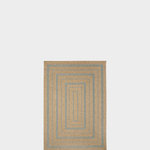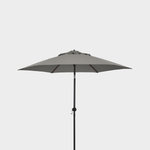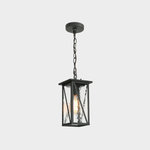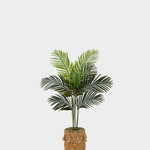Be Your Own Wildflower Nursery
Gather Seeds When They're ReadyMy rule of thumb for seed gathering over the course of late summer into fall is rather laissez-faire: When the seeds start falling off or blowing away, they're ready. (Then you really have to be on the ball, especially if it gets windy.) Here, old Liatris blooms are all puffed up, ready for the seeds to be collected. I walk around the garden a few times a week with any temporary container I can find, from glass to plastic to paper bags. The wider the container's mouth, the better for seeds that take easily to the wind — you want to catch as many as possible once you start picking.
Sometimes it's easier to cut off the tops of plants, like this ironweed, and drop the whole mess into a bag. The seed heads are so small, you'd be out there forever otherwise. Why not save picking the seeds out for a cold winter afternoon in front of a fireplace? You can even turn it into a date with your partner or some sort of romantic game. Hey, you have to spice up seed stripping.
Grass seeds are often very easy to collect. Just run your hand up the stem, from bottom to top, cupping and gathering seeds as you go.One major benefit of collecting wildflower seeds grown in your garden is you can trust them — if you don't use pesticides or chemicals, you know the seeds are organic. You also know the mother plant — where it grew, what it likes, the fact it thrives in your soil. Using locally sourced seeds is about as ecologically friendly as any act you can do in the garden, and you can't get more locally sourced than out the back door.
Coneflower seeds are not these spiky pointy things. Instead, the seed is deep down in there, little rectangular tan pieces half the size (or less) of your pinky's fingernail. To get at them, I've discovered that sacrificing my thumb is best — I push it across the flower head, getting poked and jabbed, causing the spikes to pop off and letting the seeds slip out.
Plant Before WinterOK, so now you have all these seeds. Some have fallen onto the garden bed and will resow, and you can move them in spring or let them have free will and choose their own spots. Or you can winter sow. Many seeds need cold or wet stratification — which is a period of several weeks or months of frigid, moist conditions. Here in the U.S. Central Plains, we call this period winter.I hope you kept your old nursery pots or got some from a neighbor who was throwing them away. Fill them about halfway with potting soil or even just your regular garden soil (clay, sand, whatever), and broadcast the seeds evenly across the surface. Let winter snow bury the seeds for you. Come spring you’ll have dozens of seedlings in each container, ready to pot up or place in the garden once they’ve rooted better in a few weeks. Congratulations! You’ve now become your own wildflower nursery.
Or Store Seeds for LaterIf you don’t use all of your seeds, you can certainly save them. Some might not be viable next year, but many will — if you store them correctly. Here’s how:Strip each seed from the chaff, which is often the feathery or crunchy bit connected to the seed. Let the seeds dry out, from a few days to a week. If you pick seeds when they are already falling off the plant, they should be pretty dry. But if you pick them after rain or other wet weather, they’ll need several days or weeks to dry out inside — spreading them on a pan or table helps speed up the drying.Store in a paper bag, which provides good air circulation (glass and plastic will encourage mold growth). I’ve found that school lunch bags, folded over twice and stapled, work great. I label them with the plant and year collected. Store the bags in a cool, dark, dry place. That can be in a dry garage, an outbuilding, a storage bench outside or in a basement. The benefit of storing them outside is that you’ll be cold-stratifying the seeds — some might also need moisture, but those that only need it really cold will be ready to sow again come spring or summer....
The first year I winter-sowed seeds in 24 containers. Let me tell you, I was as giddy as a kid in a candy store the following spring. I had enough plants to attack some problem areas in my beds, with plenty left over to gift or even sell. Now I’ve found I have a new addiction — collecting plastic pots and cluttering up my garden every October and November. But no need to hide this addiction, because the plants are free, and I know for sure they’ll thrive in my garden.More: 3 Ways Native Plants Make Gardening So Much Better






Fall is my favorite season — crisp mornings and evenings, warm afternoons, bright blue skies, stunning sunsets and a garden with a rainbow of fall blooms and leaf colors. Once the leaves start to drop, it's easier to tell where any plant gaps are and to plan what might yet go in. Fall is perhaps the best time for gardening — the cooler temps make things easier on you and the plants, and the warm soil allows roots to get established and be ready to take off even sooner next spring. But why buy plants when you can easily harvest and cultivate your own?
Q